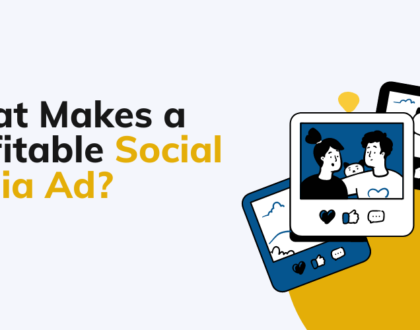Mastering Facebook Ads Targeting: Understanding Interests, Behaviors, and Demographics

Facebook advertising can be complicated, but it’s also really good at finding people who might be interested in your business. However, those who have tried it themselves understand that it is a cost-effective and efficient way to grow their business.
Unlike paid search marketing, which targets specific keywords, Facebook advertising focuses on identifying the audiences’ interests and behavior to show them ads that might be relevant to them. It’s a good way to get more customers.
How Facebook uses data to create profiles that can be targeted with Ads
Facebook collects topic data to show marketers how users react to different topics and their related content that matters most to the users. This helps marketers adjust their marketing strategies on the platform.
Previously, this information was only available through third parties, but it was not very useful due to small sample sizes and difficulty in determining demographics. Now, Facebook can gather these statistics, remove personally identifiable information, and provide marketers with insights on potential behaviors associated with a particular topic. This provides marketers with an extensive and useful perspective of their audience.
Understanding Facebook's Ad Targeting Options
The data provided through Facebook helps to target your audience more effectively by defining their interests, location, Behaviors, and demographics. This information makes up part of your targeting strategy and consequently leads to your campaign’s success.
However, it will also have an impact on how much your advertising will cost (simply put, the larger the audience, the more costly the ad as compared to a smaller audience).
Three main target audience types are used in Facebook advertising:
- Core audiences: Who are targeted based on their characteristics, habits, and geography.
- Custom audiences: Let you get in touch with customers who have already interacted with your company.
- Lookalike audiences: Let you target individuals who resemble your top consumers but may not yet be aware of your company.
Facebook also offers other targeting options like interests, behaviors, and demographics.
Let's take a closer look at each of these options:
Interests
Interest targeting on Facebook allows businesses to reach users who have expressed an interest in specific topics or activities, based on their behavior and activities on the platform such as pages liked, groups joined, and posts engaged with.
For instance, you can target an audience with a wide range of interests, including broad categories like “sports” or “travel,” or more specific ones like “yoga” or “hiking,” as well as hobbies, preferred brands, and entertainment.
By targeting users based on their interests, businesses can create more personalized and relevant ads that resonate with their target audience.
Behaviors
Behavioral targeting on Facebook allows businesses to reach users based on their actions on and off the platform, such as purchase behavior, device usage, and online behaviors like website visits or app usage.
When setting up a behavioral-based campaign, you can target users based on factors like travel behavior, charitable donations, or purchase intent.
For example, an e-commerce store might target users who previously made purchases on their website or those who abandoned their shopping carts. Behavioral targeting helps businesses reach users more likely to convert, leading to a higher ROI.
Demographics
Demographic targeting on Facebook helps businesses reach users based on characteristics like age, gender, location, education level, and job title.
It’s useful for companies with a defined customer base. As an illustration, a luxury car brand might target users with high household incomes and managerial positions, while a university might target users within a specific age range and location.
Demographic targeting helps to tailor ads to specific audiences, making them more likely to resonate with potential customers.
Tips for Effective Targeting
Effective targeting is a crucial aspect of any successful Facebook advertising campaign. By reaching the right people with the right message, businesses can maximize their ad spend and achieve better results. To help businesses make the most of their targeting options, here are some tips to consider when setting up and optimizing Facebook Ad campaigns.
- Start with broad targeting criteria: Begin by casting a wider net and gathering data about your target audience before homing in on the most effective targeting options.
- Gradually narrow down targeting options based on performance: Use data and performance metrics to refine your targeting and focus on what’s working best.
- Test and optimize: Experiment with different ad formats, targeting options, and creatives to find the best combination for your specific audience. Continuously monitor ad performance and adjust to optimize your campaigns over time.
- Use lookalike audiences: Facebook allows you to create lookalike audiences based on your existing customer base or website visitors. This can help you target people who are similar to your most valuable customers.
- Consider custom audiences: Custom audiences allow you to target people who have engaged with your brand in the past, such as those who have visited your website or made a purchase. This can help you re-engage with people who are already interested in your brand.
- Don’t forget about exclusion targeting: Exclusion targeting allows you to exclude people who are unlikely to be interested in your product or service. This can help you avoid wasting ad spend on people who are unlikely to convert.
By incorporating these additional tips into your targeting strategy, you can further optimize your campaigns and achieve even better results.
Effective targeting is a key factor in the success of Facebook ad campaigns. By starting with broad targeting criteria, gradually narrowing them down based on performance, and testing and optimizing along the way, businesses can create highly effective targeted ads that reach the right people and drive results.
Additionally, utilizing lookalike audiences, custom audiences, and exclusion targeting can help businesses further optimize their campaigns. With the right targeting strategy, businesses can maximize their ad spending and achieve their marketing goals on Facebook.
Recommended Posts

Is Performance Max Campaign a Scam? Let’s Dive In!
January 16, 2025

What Makes a Profitable Social Media Ad?
July 17, 2024


